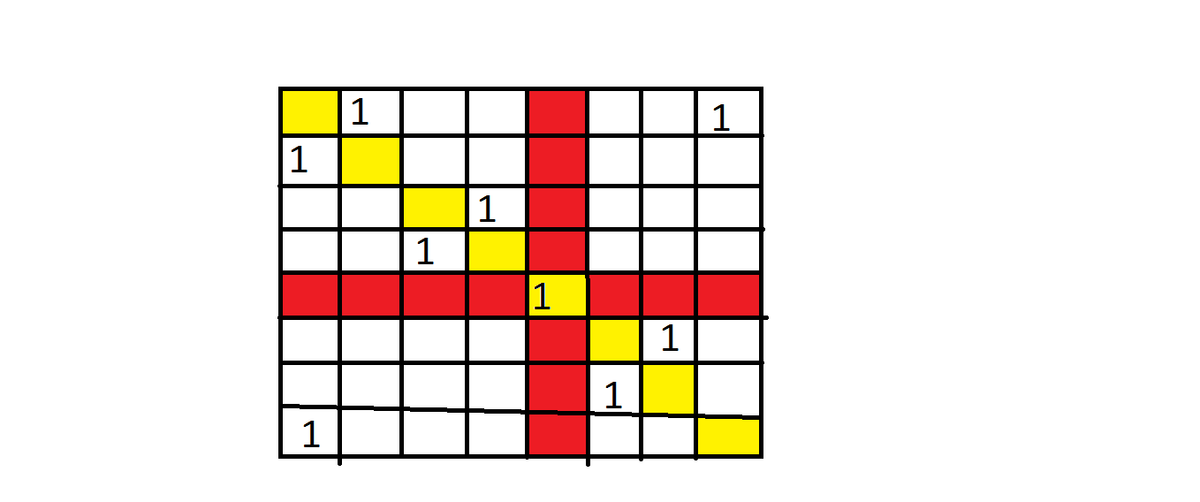Binary Chess, Move 5
How many invertible symmetric matrices containing exactly 9 ones and 55 zeros exist such that there are exactly 7 zeros on the main diagonal?
Obtained by misreading this
The answer is 840.
This section requires Javascript.
You are seeing this because something didn't load right. We suggest you, (a) try
refreshing the page, (b) enabling javascript if it is disabled on your browser and,
finally, (c)
loading the
non-javascript version of this page
. We're sorry about the hassle.

My solution is a bit technical. Maybe there is an easier way.
Since there has to be at least 1 one in each row, we have exactly one row (the j th, say) with 2 ones. By symmetry, there will be 2 ones in the j th column as well. In fact, the j j -entry has to be one; otherwise the matrix would have two equal rows. If we replace this one in the j j th entry by a zero, we have a symmetric permutation matrix without ones on the diagonal.
Let f ( n ) be the number of symmetric permutation matrices without ones on the diagonal, for even n . Thinking about the position of the one in the first row (and column), we find the recursive formula f ( n ) = ( n − 1 ) f ( n − 2 ) , meaning that f ( n ) = ( n − 1 ) ! ! , the double factorial. Thus f ( 8 ) = 7 × 5 × 3 = 1 0 5 .
For each of these symmetric permutation matrices, we can now place the 9th one anywhere on the diagonal, so that we end up with 8 × 1 0 5 = 8 4 0 such matrices.